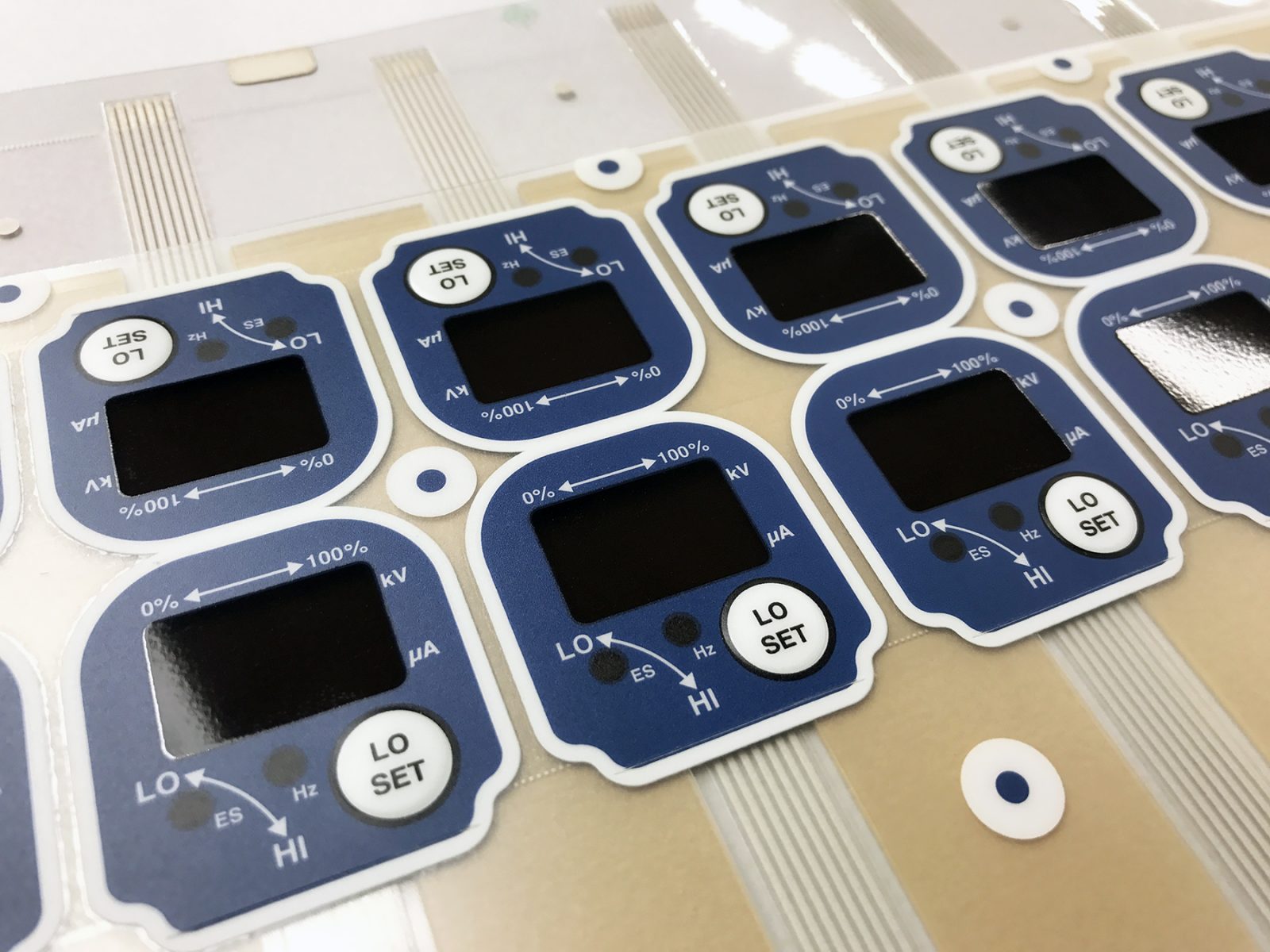The Benefits of Using Membrane Layer Switches Over in Customer Electronics
Membrane layer switches are increasingly acknowledged for their significant benefits in customer electronics, especially in improving user communication and enhancing production processes. Their capacity to supply intuitive interfaces and responsive comments can significantly lower individual mistakes, while their lightweight building and simplified production actions add to cost-effectiveness and quicker market access. Furthermore, the flexibility in design permits for tailored options that fulfill varied consumer demands. Yet, the ramifications of these advantages expand beyond plain performance, meaning a transformative potential for the future of electronic devices. What further advantages might emerge as this modern technology develops?
Boosted Customer Experience
In today's competitive landscape of customer electronic devices, boosted customer experience is paramount; almost 85% of customers focus on instinctive user interfaces. Membrane changes play an important function in accomplishing this degree of functionality. Their level, inconspicuous layout permits for seamless combination into different gadgets, minimizing mass while keeping capability. This layout visual not just improves the aesthetic appeal but also contributes to a much more streamlined user communication.
The responsive comments offered by membrane layer buttons is essential for leading individual actions, making sure that commands are signed up precisely. This feedback mechanism decreases errors and heightens customer fulfillment, promoting a positive connection in between the device and the individual. Additionally, the personalized nature of membrane layer switches over enables manufacturers to customize interfaces to specific customer requirements, making tools much more accessible and inviting.
Additionally, membrane layer switches can integrate backlighting and visuals overlays, further boosting exposure and use in diverse atmospheres. This adaptability makes certain that devices stay user-friendly and practical, no matter of the setting. In general, the assimilation of membrane changes right into customer electronics significantly improves individual experience, driving brand commitment and satisfaction in a progressively affordable market.
Cost-efficient Manufacturing
Consumer electronic devices suppliers are constantly seeking ways to stabilize quality with cost, and membrane layer switches use a compelling service for economical production. membrane switch. These elements are inherently less complex than traditional mechanical buttons, which reduces both manufacturing costs and complexity. The lightweight style of membrane switches enables reduced shipping costs and simpler combination into portable tools, even more enhancing their allure in an affordable market

Producers can generate membrane layer switches in high volumes, taking benefit of economies of scale. This automation capacity makes sure constant quality while considerably lowering per-unit expenses. Additionally, the products made use of in membrane layer switches, such as polyester and polycarbonate, are often cheaper than those required for conventional button technologies, adding to total expense financial savings.
The production process for membrane switches normally needs fewer steps and much less labor contrasted to other switch kinds. This structured technique not just saves on labor prices yet additionally accelerates time-to-market, enabling business to respond promptly to customer need. The mix of reduced material expenses and efficient production processes settings membrane layer switches as a clever financial investment for suppliers aiming to deliver high-quality consumer electronics at affordable cost factors.
Style Versatility and Personalization
While standard mechanical buttons frequently enforce constraints on design due to their bulk and needed installing mechanisms, membrane layer switches supply unparalleled adaptability and personalization choices for consumer electronics. This ingenious modern technology allows designers to create streamlined, inconspicuous user interfaces that can perfectly integrate right into various item aesthetic appeals, from smartphones to kitchen appliances.
Membrane layer buttons can be produced in virtually any type of form or size, allowing makers to customize the design to certain ergonomic and functional requirements. This adaptability not only enhances customer experience but additionally enables creative styles that line up with brand identity. The use of published graphics on membrane switches over supplies the chance for detailed styles and vibrant shades, which can be conveniently changed without considerable cost effects.
Additionally, membrane switches can incorporate numerous functionalities right into a single layer, decreasing the demand for several parts and streamlining setting up processes. This structured design technique lessens area and weight, making it optimal for small customer electronic devices. Generally, the design adaptability and customization capabilities of membrane changes encourage manufacturers to introduce, ultimately causing even see this site more appealing and straightforward items.
Toughness and Reliability
As modern technology remains to advance, the resilience and dependability of membrane switches have actually come to be crucial considerations for producers in the consumer electronics market. Membrane buttons are designed to withstand severe ecological problems, including temperature changes, wetness, and dirt exposure. Their durable building and construction typically includes multi-layered products that provide a reliable obstacle versus impurities, making sure long life and regular efficiency.
Along with environmental resistance, membrane layer changes deal remarkable mechanical reliability. Unlike typical mechanical buttons, which might wear gradually, membrane layer switches make use of a covered layout that lessens the risk of mechanical failure. The absence of moving components not only boosts their life-span yet additionally minimizes deterioration, making them perfect for high-usage applications.
Additionally, membrane buttons can endure a significant variety of actuations without here loss of capability, commonly surpassing countless cycles (membrane switch). This sturdiness translates to decrease substitute prices and minimized downtime for consumers and producers alike. On the whole, the combination of ecological strength and mechanical dependability makes membrane switches over a calculated choice for consumer electronic devices, guaranteeing that devices continue to be efficient and operational throughout their designated lifespan

Streamlined Product Development
The sturdiness and integrity of membrane layer switches over dramatically add to structured product advancement in the consumer electronic devices market. By integrating these buttons early in the layout procedure, makers can minimize the complexity and variety of parts needed in their products. Membrane layer buttons are portable and lightweight, allowing for more effective area usage within devices, which can bring about simplified assembly procedures.

The ease of producing membrane layer buttons likewise plays a vital function in item development. With modern printing strategies and products, production can be scaled efficiently, lessening lead times and reducing waste. This results in reduced production costs, boosting general profitability.

Final Thought
In verdict, membrane switches over significantly enhance customer electronics by supplying a boosted user experience, cost-efficient manufacturing procedures, and flexible layout alternatives. The assimilation of membrane layer changes stands for a tactical choice for suppliers seeking to maximize product layout and efficiency.
Membrane layer buttons are increasingly acknowledged for their substantial benefits in customer electronics, especially in improving customer interaction and streamlining manufacturing procedures. Additionally, the materials utilized in membrane layer switches, such as polyester and polycarbonate, are often less costly look at this now than those needed for standard button technologies, adding to overall expense financial savings.
The production procedure for membrane layer switches over usually needs less actions and much less labor contrasted to various other switch types. Unlike conventional mechanical switches, which may use out over time, membrane switches use a closed style that lessens the danger of mechanical failing.In final thought, membrane layer changes dramatically boost customer electronic devices by supplying a boosted user experience, cost-effective manufacturing processes, and functional design choices.